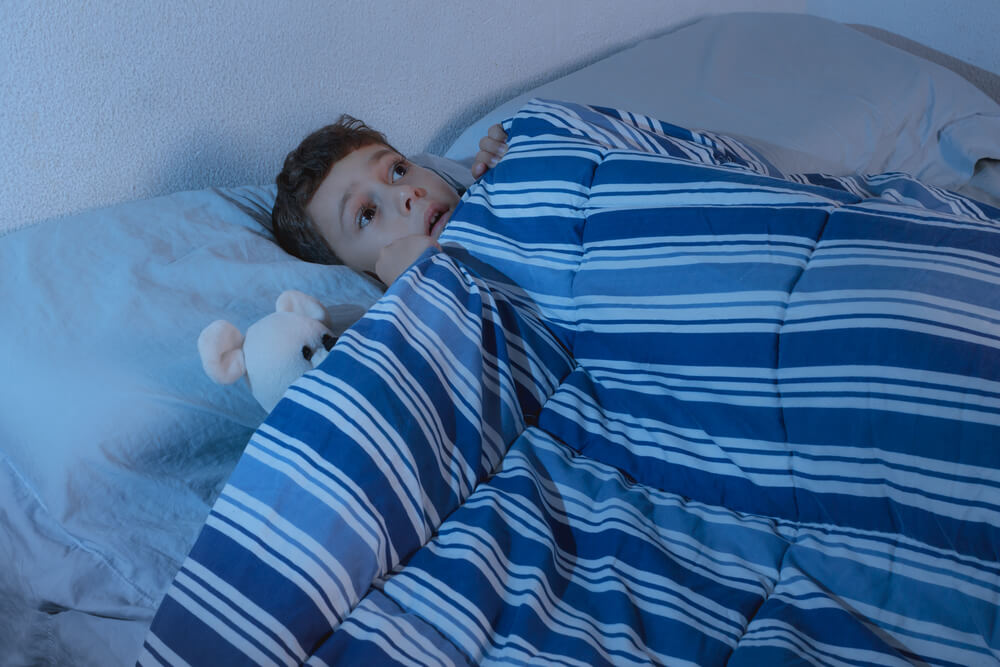Attention Deficit Hyperactivity Disorder (ADHD)


Escrito y verificado por el psicólogo Bernardo Peña
Attention deficit hyperactivity disorder (ADHD) is characterized by socially disruptive behavior. For example, attention problems or hyperactivity that appear before the age of seven and last at least six months. Basically, the disorder defines children that are extraordinarily active and show brief periods of concentration.
Types of ADHD
Three types of attention deficit hyperactivity disorder are recognized:
- ADHD of the hyperactive-impulsive type: This is characterized by high behavioral activity (they can’t keep still, they only concentrate for very short periods, they’re very easily distracted, they’re impulsive and they have a total lack of self-control). Generally, these children tend to be socially rejected and are prone to accidents and self-injurious behaviors.
- Attention Deficit Predominant ADHD: Characterized by problems such as distraction, inability to maintain attention, paying little attention to detail, and finding it very difficult to complete tasks. These children are generally described as lazy, dreamy, anxious, and shy.
- Combined-type ADHD: This is probably the most common form of the disorder. In this case, the criteria of hyperactivity and inattention would be met.

ADHD: things to keep in mind
One thing to keep in mind is that ADHD can easily be confused with other psychopathologies or behavioral disorders. Some children may be restless or distracted during class or in other activities.
However, according to the American Psychiatry Association (2000), the most significant indication that we’re dealing with a case of ADHD is that the person shows a pattern of hyperactivity and inattention in multiple facets of their lives.
Currently, ADHD is the most diagnosed disorder in people who are of school age. Therefore, we must draw attention to the risk of overdiagnosis, as it’s necessary to carry out a full psychological evaluation.
ADHD is linked to a multitude of behavioral and academic problems. In fact, these children often have poor performance and grades. Children with this condition have more difficulty in unstructured situations and activities that require sustained attention.
Causes of ADHD
Attention deficit hyperactivity disorder is a complex, multi-causal neurobehavioral disorder. The causes of this disorder range from genetic to environmental, through psychological.
ADHD and Central Nervous System (CNS)
According to Spencer et al. 2007, there are a number of mechanisms that may not be working properly in the brain of people with ADHD:
- Possibly, there is an alteration in the dorsolateral prefrontal cortex that affects the organization and planning processes of behavior as well as sustained attention.
- Neuroimaging studies show that people with this disorder have a thinning in the prefrontal cortex, cerebellum, as well as some subcortical structures.
- There may be an inadequate amount of dopamine that affects the Central Nervous System (CNS), causing ADHD.

Read also: What Is Serotonin Syndrome?
ADHD and other biological factors
It also seems that this disorder shows a high degree of heritability. In addition, there seem to be other causes that predispose to ADHD:
- Lead poisoning
- Exposure to alcohol and tobacco
- Low birth weight
- Lack of oxygen during labor
- Fetal alcohol syndrome
- Food additives or colorants
Psychological and environmental factors
Although biological factors are generally emphasized when explaining the etiology of ADHD, psychological and environmental factors are closely related to the development of the condition. All these factors can contribute:
- Serious marital disagreements
- Lower class family
- Large families
- Family conflicts
- Maternal psychopathology
- Criminality
- Prevalence of mental disorders in the family
- Highly demanding and stressful environmental situations
- Deprivation and social exclusion
You may be interested in: Borderline Personality Disorder: Symptoms, Causes and Treatment
Treatment for ADHD
During the last decades, psychopharmacological treatment has been what specialists have mostly used. Specifically, in this case, the most effective are stimulants like Ritalin. However, in recent years, more and more clinicians have focused treatment attention on family dynamics and the child’s psychosocial problems.
Currently, the most successful psychological therapy is behavioral therapy and parent training. In the same way, the combined psychological and psychiatric treatment of ADHD is much more effective.
Conclusions
ADHD is a psychological disorder with many causes, which requires multidisciplinary treatment. Fortunately, better treatments are increasingly available today. It should be noted that, in order to improve the effectiveness of treatment, parental commitment is needed and it should be started as soon as possible.
Attention deficit hyperactivity disorder (ADHD) is characterized by socially disruptive behavior. For example, attention problems or hyperactivity that appear before the age of seven and last at least six months. Basically, the disorder defines children that are extraordinarily active and show brief periods of concentration.
Types of ADHD
Three types of attention deficit hyperactivity disorder are recognized:
- ADHD of the hyperactive-impulsive type: This is characterized by high behavioral activity (they can’t keep still, they only concentrate for very short periods, they’re very easily distracted, they’re impulsive and they have a total lack of self-control). Generally, these children tend to be socially rejected and are prone to accidents and self-injurious behaviors.
- Attention Deficit Predominant ADHD: Characterized by problems such as distraction, inability to maintain attention, paying little attention to detail, and finding it very difficult to complete tasks. These children are generally described as lazy, dreamy, anxious, and shy.
- Combined-type ADHD: This is probably the most common form of the disorder. In this case, the criteria of hyperactivity and inattention would be met.

ADHD: things to keep in mind
One thing to keep in mind is that ADHD can easily be confused with other psychopathologies or behavioral disorders. Some children may be restless or distracted during class or in other activities.
However, according to the American Psychiatry Association (2000), the most significant indication that we’re dealing with a case of ADHD is that the person shows a pattern of hyperactivity and inattention in multiple facets of their lives.
Currently, ADHD is the most diagnosed disorder in people who are of school age. Therefore, we must draw attention to the risk of overdiagnosis, as it’s necessary to carry out a full psychological evaluation.
ADHD is linked to a multitude of behavioral and academic problems. In fact, these children often have poor performance and grades. Children with this condition have more difficulty in unstructured situations and activities that require sustained attention.
Causes of ADHD
Attention deficit hyperactivity disorder is a complex, multi-causal neurobehavioral disorder. The causes of this disorder range from genetic to environmental, through psychological.
ADHD and Central Nervous System (CNS)
According to Spencer et al. 2007, there are a number of mechanisms that may not be working properly in the brain of people with ADHD:
- Possibly, there is an alteration in the dorsolateral prefrontal cortex that affects the organization and planning processes of behavior as well as sustained attention.
- Neuroimaging studies show that people with this disorder have a thinning in the prefrontal cortex, cerebellum, as well as some subcortical structures.
- There may be an inadequate amount of dopamine that affects the Central Nervous System (CNS), causing ADHD.

Read also: What Is Serotonin Syndrome?
ADHD and other biological factors
It also seems that this disorder shows a high degree of heritability. In addition, there seem to be other causes that predispose to ADHD:
- Lead poisoning
- Exposure to alcohol and tobacco
- Low birth weight
- Lack of oxygen during labor
- Fetal alcohol syndrome
- Food additives or colorants
Psychological and environmental factors
Although biological factors are generally emphasized when explaining the etiology of ADHD, psychological and environmental factors are closely related to the development of the condition. All these factors can contribute:
- Serious marital disagreements
- Lower class family
- Large families
- Family conflicts
- Maternal psychopathology
- Criminality
- Prevalence of mental disorders in the family
- Highly demanding and stressful environmental situations
- Deprivation and social exclusion
You may be interested in: Borderline Personality Disorder: Symptoms, Causes and Treatment
Treatment for ADHD
During the last decades, psychopharmacological treatment has been what specialists have mostly used. Specifically, in this case, the most effective are stimulants like Ritalin. However, in recent years, more and more clinicians have focused treatment attention on family dynamics and the child’s psychosocial problems.
Currently, the most successful psychological therapy is behavioral therapy and parent training. In the same way, the combined psychological and psychiatric treatment of ADHD is much more effective.
Conclusions
ADHD is a psychological disorder with many causes, which requires multidisciplinary treatment. Fortunately, better treatments are increasingly available today. It should be noted that, in order to improve the effectiveness of treatment, parental commitment is needed and it should be started as soon as possible.
- Peña-Herrera, B. (2018) Psicopatología General. Samborondón: Universidad Espíritu Santo – Ecuador
- Caballo, V. E., Salazar, I. C., & Carrobles, J. A. I. (2014). Manual de psicopatología y trastornos psicológicos. Pirámide.
- Eguiluz Uruchurtu, I., & Segarra Echebarría, R. (2013). Introducción a la psicopatología: una visión actualizada (No. 616.89). Médica Panamericana,.
Este texto se ofrece únicamente con propósitos informativos y no reemplaza la consulta con un profesional. Ante dudas, consulta a tu especialista.







